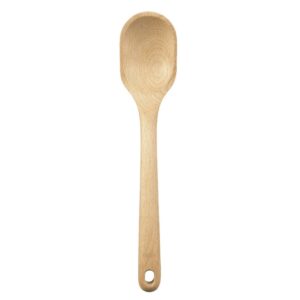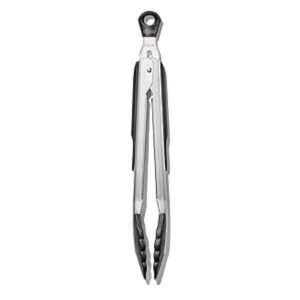Ingredients
- 1 bone-in, skin-on, smoked half leg ham (2.8–6.5 kg/6–14 lb 8 oz), see note 1
- 20–30 cloves
- 1 cup (250 ml) water
- 1½ cups (475 g) apricot jam
- 2 tbsp dijon mustard
- ½ firmly packed cup (60 g) brown sugar
- ¼ cup (60 ml) apple cider vinegar or white wine vinegar
- 1 tsp finely grated ginger
HAM STATION INGREDIENTS
- Piccalilli (mustard pickles)
- Chutney
- Apple sauce
- Horseradish
- Hot mustard
- Onion jam
- Cornichons
TO GARNISH
- 4 rosemary sprigs
Instructions
Prepare the ham
- Remove the ham from the fridge at least 1 hour before cooking to help with even heating. Remove from the packaging and use a paper towel to remove any excess moisture.
- Preheat the oven to 180°C (350°F) (140°C/275°F fan-forced) and ensure the position of the oven racks allows sufficient space for your ham – you may need to remove some racks from the oven. Place one rack in the bottom third of the oven, so that the ham will be sitting in the centre of the oven (not at the top).
- Using a sharp knife, cut around the shank (bone handle) of the ham, about 10 cm (4 inches) from the end. Cut down one side of the ham through the rind/skin only, taking care not to go all the way through to the fat/flesh(watch the video for guidance).
- Slip your fingers between the rind and the fat, gently lifting the rind up before peeling it away. (I use a butter knife to help me.)
- Score the fat in a diamond pattern, making shallow cuts with a butter knife. Create superficial scores. Do not go too deep. Only score the fat layer (not into the meat). If you go too deep, the fat will shrink and fall off as it cooks.
- Stamp a clove into the middle of each diamond shape you have created.
- Place the ham on a wire rack in a roasting pan. Use some foil or baking (parchment) paper rolled up into balls to place underneath the ham shank (bone handle) to prop it up so the top of the ham lies flat (it helps the glaze cook evenly).
- Add the water to the base of the roasting pan.
Make the glaze
- Make the glaze by adding the jam, mustard, brown sugar, vinegar and ginger to a bowl or jug. Combine well with a whisk.
Bake and glaze
- Gently brush one-third of the glaze over the entire surface of the ham, taking care not to disturb the cloves. Bake, brushing with more glaze every 20–25 minutes, for 11/2–2 hours. Cover any of the bits that are caramelising quickly with small pieces of foil. Add an extra ½ cup (125 ml) of water to the base of the pan if it looks like the juices in the base are drying out.
- Drizzle the tray juices over the ham and reserve any extras for serving.
- Allow the ham to rest for 15–20 minutes before presenting for serving and carving.
Present and carve the ham
- After allowing the ham to rest for 15–20 minutes, prepare it for serving.
- Wrap the shank (bone handle) in a piece of clean (brown) baking paper or a cotton serviette to give it a polished appearance. Secure it with a piece of natural twine tied in a neat bow or knot.
- Place the ham on a large serving platter or chopping board and garnish with fresh rosemary. Serve with your chosen condiments, such as piccalilli, chutney or apple sauce, and the tray juices to spoon over the top.
- The ham can be served warm or cold, sliced thinly. I generally like to cut around one-third of the ham to start with so the remaining ham is left on the bone for everyone to admire at the table.
Notes
Note 1 – This recipe is suitable for whole or half legs of ham. The ham pictured is a half leg. When selecting a ham for this recipe, you’ll likely come across butt or shank cuts. Here’s the difference: Shank ham is what I have used in the video, it’s the lower portion of the leg and is perfect for presentation and easy carving along the bone. Butt, or butt end, ham (not to be confused with Boston butt), is from the upper portion of the leg, it is shorter and more rounded in shape. It can have more marbling (which equals more flavour). Both work beautifully. Choose shank ham for an elegant presentation and easier carving. I like the flavour of a smoked ham best, but you can also get unsmoked. Make sure you do not buy raw ham (gammon) by mistake. See also the Hot Tips above.
Make ahead
The glaze – Can be prepared up to 2 days in advance and stored in an airtight container in the fridge.
The ham –
- Option 1: prep ahead – Can be prepared (rind removed, fat scored and cloves studded) the day before baking. Wrap it tightly in plastic wrap and store it in the fridge. Glaze and bake on the day of serving.
- Option 2: bake ahead – The entire ham can be glazed and baked and then refrigerated in a non-reactive airtight container (such as plastic or glass) for up to 3 days. To reheat, place the ham on a rack in a roasting pan with 1 cup (250 ml) of water in the base of the tray. Cover the ham loosely with foil and bake at 160°C (325°F) (140°C/275°F fan-forced) for 40–50 minutes or until a metal skewer inserted comes out warm. Remove the foil and bake for a further 10–15 minutes until the ham is shiny and caramelised.
Leftovers
Store leftover ham in a calico bag (plain cotton bag) in the fridge for up to 2 weeks or leftover slices in an airtight container for up to 3 days. Freeze sliced ham for up to 1 month. Thaw completely overnight in the fridge prior to use. Depending on the type of ham used, these time frames may vary (although these are conservative timeframes and many sources suggest you can keep your ham for longer). Check with your local food authority for more information.
- Prep Time: 30 minutes
- Cook Time: 1 hour 40 minutes
- Category: Pork
- Method: Roast
- Cuisine: Modern


